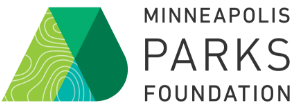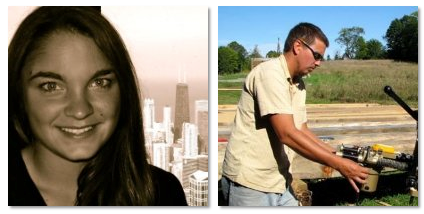Last summer, Sarah Hayosh and Chris Tallman joined MPF as Research Assistants in Practice. They’re embedded at Juxtaposition Arts, in North Minneapolis, and engaging youth in re-imagining the connection to the Upper Mississippi Riverfront.
(MPF) What do you anticipate will be the outcome of your work?
(Sarah Hayosh/Chris Tallman) A tough question to start…without intending to dodge predicting an outcome we think it’s important to understand that landscape architecture, separate from other design disciplines and planning professions, often does not have either a client or a program to inform forecasting. That said, we’ve had our boots on the ground now for four months and we have an emerging sense of the spatial dynamics and the character of the communities. What this means is that the relationships are growing that will permit us to elicit authentic insights into the needs and aspirations of North Minneapolis residents for their riverfront. The fruits of such a pursuit will be traditional design documents –models, reports, renderings, schematic plans, etc.– however we’re pursuing the integration of an informed participatory partnership from within the community. Such a partnership can lead to us as designers giving voice to the vision of the community partners which is a break from traditional planning and design models where an outside designer brings the idea and implementation framework. We feel that the community needs to be tasked as partner in both these pursuits.
Tell us about the process – what is it, how did you decide what it will be, and with whom are you working?
Design is a generalist discipline. As such the more we know as designers about everything the more holistic our suggestions for intervention will be. In the pursuit of knowing as much as we can possibly absorb we’ve pursued an intensive process of reviewing existing plans that relate to our interests regarding connectivity and the Upper Harbor Terminal. We’re also looking at case study projects and have been working on a multi-pronged engagement approach with our partners at Juxtaposition Arts. These efforts are supported by our own independent conversations with both regional river design experts and what is currently an informal in situ [on site] engagement with North Minneapolis park users. It’s amazing how genuine a sense of a community’s perception of space and identity you can glean from having informal questions while watching a football game at Farview Park.
What are you hearing during interviews? Who have you interviewed so far (broadly, don’t need to identify people)?
The boiler plate, as mentioned, has been to open dialogues with river advocates and engagement experts from the University of Minnesota. These contacts have snowballed out to include area river professionals, planners, parks folks, community activists, and everyday citizens. The really exciting part of this process is that we’re hearing that the river can and should be the heart of the city!
However, there is a challenge in articulating why the river is important when many do not have a relationship to the river. The first step is working towards building that relationship which is reflected in our work with Juxtapostion Arts.
Are there other perspectives you’d like to glean?
There are many North Minneapolis organizations that we would bring into the conversation. Our earliest feeling was that North Minneapolis needed a centralized group composed of representatives from across the district to come together and mutually develop a vision for North Minneapolis’ river and their community connections to the river. Our research, conversations, and “ground-truthing” have only heightened this sense that North Minneapolis would benefit from a focused advocacy for their river.
What have you learned so far from your research?
Whoa…a lot and not nearly enough. Number one in a design process…talk to the community, early and often. The other thing that stands out is that without a vision group, a coherent advocacy organization, that holds the character and interests of North Minneapolis as their priority as the riverfront at Upper Harbor Terminal is opened to development, then quite frankly, the river edge at Upper Harbor will be an imported artifact rather than an emergent expression of the community’s identity and aspirations. It would be a shame to homogenize our urban river.
What attracted you to this RA position?
The immense complexity of both scale and networks and politics. The opportunity to test out key aspects of Landscape Architectural theory, in that, to work with community organizations to elicit authentic input into a design process is not something that is easily integrated into professional practice modes due to the obvious pressures of having to participate in a competitive market. Through no lack of desire to engage too often professional planning doesn’t have the budget or time to undertake a protracted investigation of the social and emergent typologies that should be addressed. Being graduate students we have not only a protracted term to investigate these typologies but we also have a degree of agility that can’t be budgeted into most planning projects.

